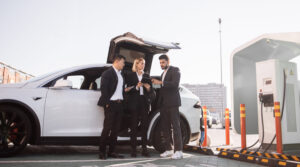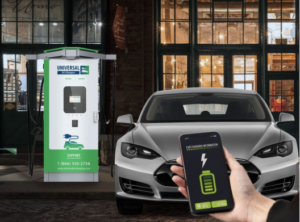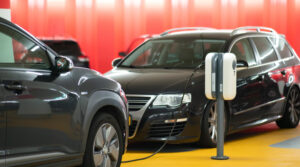Take a walk down the streets of many middle-class neighborhoods today and you are likely to notice several electric vehicles (EVs) tethered to garage walls. But while we tend to notice EVs more often because they are a new phenomenon, penetration is still relatively low, with a current range of 2% to 3%. However, the respected consulting group McKinsey projects EVs will represent roughly 36% of all vehicles on the road by 2030, which is astonishing growth in only eight years.
This growth in the number of EVs can be attributed to consumer demand for cost-saving and environmentally friendly vehicles, alongside government policies that encourage adoption and inflationary factors. However, hindering the adoption of EVs are several negative forces that include EV supply chain delays, concerns about EV battery life and, importantly, a lack of public EV charging stations across a wide area of the U.S.
By providing EV chargers on a hotel property, business owners allow drivers to plug in their vehicles and remain on-site for the charge duration. This is an advantage in the industry as it puts the property on the map as a charging station alongside major highways.
Fast Company reports that the East and West Coasts offer plenty of EV charging stations to meet demand, but many states in the center of the country remain in the EV charging “dead zone”. If there are no EV chargers in the lightly covered parts of the country, it will become impossible for EV owners to use their vehicles as a form of transportation for long trips.
The Need for EV Chargers to Meet U.S. EV Driver’s Demands
In a recently published study, Forbes estimates: “Assuming 35 million EVs by 2030; the U.S. will need to build about 50,000 DC Fast Chargers and 1.2 million Level 2 ports. This means that 380 EV charging ports will need to be installed each day over the next nine years! In comparison, the U.S. has installed on average about thirty ports a day between 2010 and 2020.”
Similarly, according to InsideEVs, “There are currently between 110,000 – 150,000 fuel stations (each with multiple individual pumps) and the number of EV charging outlets is around 110,000.” This will require the installation of EV chargers to exceed 478 installs each day for the next eight years. While the EV infrastructure continues to grow, the supply of EV chargers must keep up.
We must also consider the average distance that an electric vehicle can travel on a single charge, ranging from 250 to 600 miles. On newer models of manufactured EVs, a charge tends to cover a longer distance. However, there are real-world range factors that can affect the exact distance an electric vehicle can drive. These factors include driving habits, internal and external temperatures, road resistance, excess drag, and battery health. Therefore, it is vital for the U.S. to establish an EV charging infrastructure nationwide that can support all EV drivers and EV brands
The Need for Brand-Specific EV Chargers Makes Developing Coast to Coast U.S. Charging Infrastructure More Complex – But There Is A Great Solution
Until this year, EVs have required brand-specific chargers. This means that each public EV charging station owner must provide multiple charging stations to meet the needs of the EV driving public. Additionally, there is the solution of an adapter which becomes the driver’s responsibility.
Now, Universal Green Group has introduced the first completely universal EV charger. A universal EV charger is a game-changer because it offers flexibility in terms of how and where EV drivers can find a charge. These chargers plug into any standard outlet and can charge EVs from different manufacturers, ensuring that drivers nationwide can drive anywhere without fear of running out of a charge.
But Where Should Charging Stations Be Built?
The logical answer is to build EV charging stations where EV drivers will need them. Many gas stations include some EV chargers, but an EV charge requires a longer process that of filling a tank with gas. The difficulty with this solution has been finding a comfortable place for drivers to wait for up to an hour.
Some of the most interesting ideas have been hotels and other hospitality/entertainment venues where drivers can relax or use the venue’s WIFI to catch up with work or plan the next leg of their trip.
Finding the answer to this question quickly will be one of the most important contributions to EV adoption in the U.S.
For more information on EV charging stations, contact us today at ev@universalgreengroup.com




